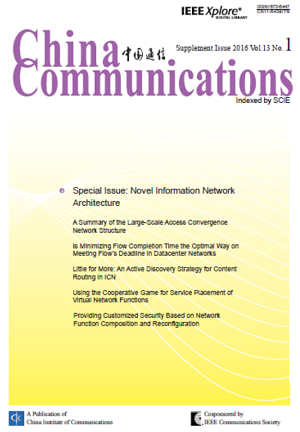NETWORK ARCHITECTURE
LAN Julong, ZHANG Xiaohui, SHEN Juan, HU Yuxiang, WANG Xiang, MAO Zhenshan, WANG Lingqiang, LIANG Dong
2016, 13(1z): 1-5.
Under the requirement of everything over IP, network service shows the following characteristics: (1) network service increases its richness; (2) broadband streaming media becomes the mainstream. To achieve unified multi-service bearing in the IP network, the large-scale access convergence network architecture is proposed. This flat access convergence structure with ultra-small hops, which shortens the service transmission path, reduces the complexity of the edge of the network, and achieves IP strong waist model with the integration of computation, storage and transmission. The key technologies are also introduced in this paper, including end-to-end performance guarantee for real time interactive services, fog storing mechanism, and built-in safety transmission with integration of aggregation and control.
